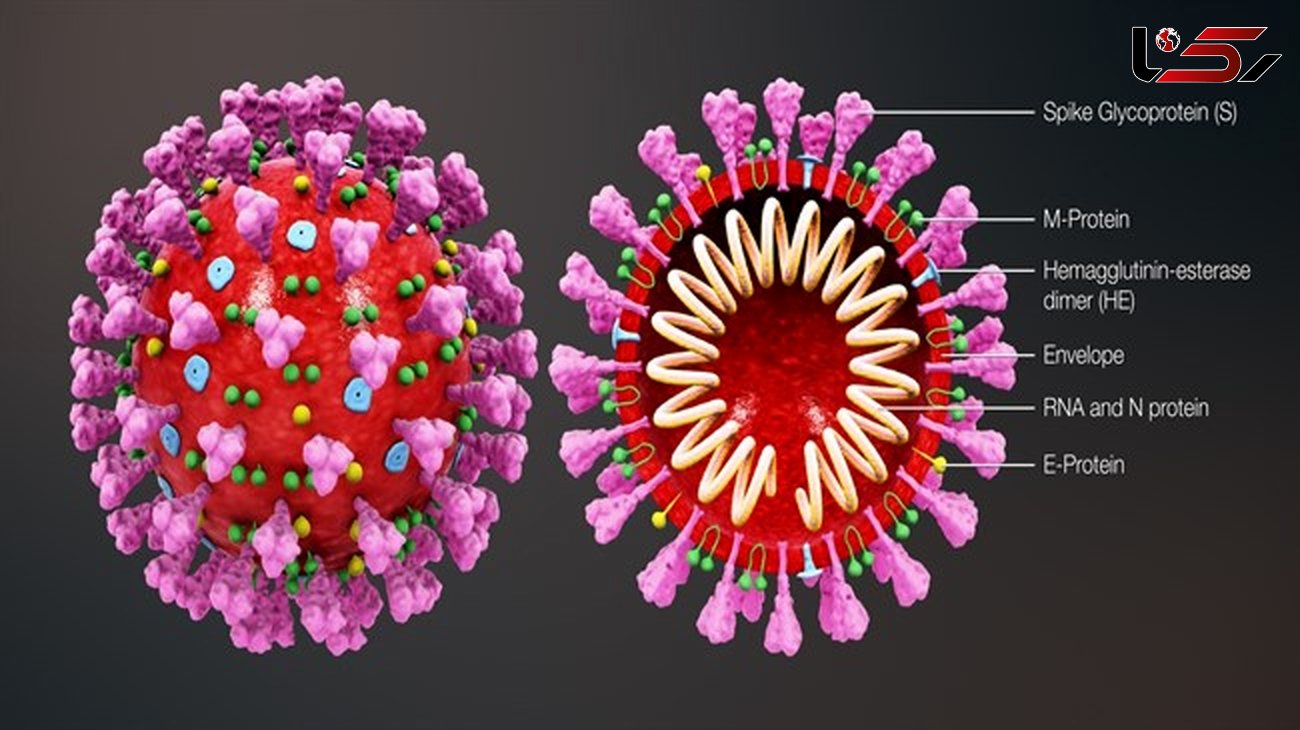SARS-CoV-2 spike glycoprotein optimized for conditions present in human airways
Rokna:Researchers from Belgium and Germany demonstrated how the spike glycoprotein of the severe acute respiratory syndrome coronavirus 2 (SARS-CoV-2) is fine-tuned towards the temperature and protease conditions of the human airways, which in turn enhances viral transmission and subsequent pathology. Their study is available on the bioRxiv preprint server.

The rapid advance of SARS-CoV-2, the causative agent of coronavirus disease (COVID-19) pandemic, is linked to copious replication in the upper airways, which is not the case for other highly pathogenic human coronaviruses such as SARS-CoV-1 and MERS-CoV, news-medical.net reported.
Moreover, since SARS-CoV-2 is characterized by abundant replication in the nose, it is possible that its spike glycoprotein (which mediates viral entry into the host cells) is somehow adjusted for this cooler compartment.
Transmembrane serine protease 2 (TMPRSS2) in the host is a prominent player in cleaving the full-length spike glycoprotein and S2 activation, which in turn broadens the cell or tissue tropism of the putative viral agent.
It is important to note that within a few months of circulating among humans, SARS-CoV-2 has gained a spike mutation known as D614G — increasingly recognized as a possible cause of augmented viral transmission. More specifically, the D614G mutation was detected relatively early in the course of the pandemic.
Therefore, in a recent tour de force paper, a research group led by Dr. Manon Laporte from the University of Leuven in Belgium revealed features of SARS-CoV-2 glycoprotein, which is responsible for optimizing the virus towards different regions of the respiratory tract.
"We hypothesized that coronavirus spike glycoproteins might exhibit temperature dependency, in relation to the temperature required for optimal virus replication," said study authors. "The temperature gradient in the human respiratory tract is a plausible key factor in determining whether a virus preferentially replicates in the upper or lower airways," they add.
In order to study this, the researchers first produced murine leukemia virus (MLV) particles bearing spike glycoproteins of the highly pathogenic SARS-CoV-1, SARS-CoV-2, and MERS-CoV, but also the common cold coronavirus HCoV-229E. Pseudovirus production was performed at 33°C and 37°C.
Then they have addressed how SARS-CoV-2 entry is controlled by host proteases that cleave spike glycoprotein's extended S1/S2 loop or S2' site. Consequently, they have analyzed the entry behavior of diverse loop deletion mutants, and assessed which of the 18 human type II transmembrane serine protease families (including TMPRSS2) act as coronavirus spike activators.
Finally, the researchers have investigated the temperature and protease dependency of the SARS-CoV-2 D614G mutant in order to appraise how these spike features might be associated with virus transmissibility.
In this study, the researchers have revealed that the common cold virus HCoV-229E replicates much more efficiently at 33°C and 35°C when compared to 37°C and (particularly) 39°C. Likewise, SARS-CoV-2 was reported to prefer 33°C to 37°C, whereas SARS-CoV-1 showed the opposite profile.
Furthermore, spike glycoprotein of SARS-CoV-2 was efficiently activated by TMPRSS13, alongside previously identified host cell protease TMPRSS2, which broadens the known cell tropism of SARS-CoV-2.
TMPRSS13 was found to be an effective spike activator for the virulent coronaviruses, but not the common cold HCoV-229E virus. Also, the activation by these proteases necessitates pre-cleavage of the S1/S2 cleavage loop, and both its furin motif and extended loop length proved to be pivotal in achieving virus entry into airway epithelial cells.
Finally, the researchers have shown that the D614G mutation in SARS-CoV-2 has the propensity to increase spike glycoprotein stability and its expression at 37°C, which also promotes virus entry via cathepsin B/L activation (i.e., a family of lysosomal cysteine proteases).
"In this study, we recognized two features of the SARS-CoV-2 spike protein, i.e., compatibility with the varying temperature in the human respiratory tract and a well-tuned protease activation mechanism, which may well be two determinants for the high transmissibility and virulence of this virus", conclude study authors in this bioRxiv paper.
Their approach to involve pseudoviruses with the spikes of SARS-CoV-1, MERS-CoV, and HCoV-229E opened the door for noticing analogies and interpreting the obtained findings from a much broader perspective.
In conclusion, these insights will further elucidate coronavirus-host interaction, and adaptation and (at least in the short term) may prove highly valuable for understanding the behavior of emerging spike mutants of SARS-CoV-2.
Iran Daily

Send Comments